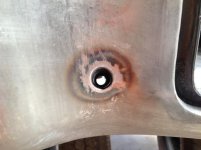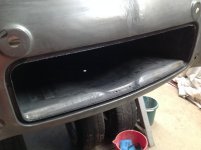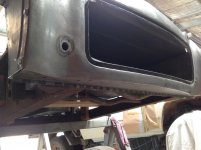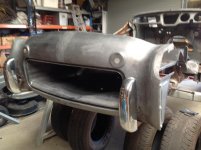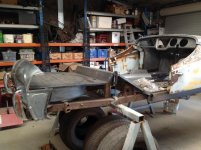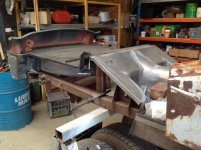OP
LionelJrudd
Jedi Trainee
Offline
5:30pm and still 42.5 degrees C. A very hot day in the shed. Not sure how hot in a leather apron and welding mask!
Slow week. A friend asked me to cut out the rust in his Toyota Landcruiser so that has been taking priority. I hate patch ups!
Finished the spare wheel carrier and fitted the front of the box section and mounting brackets. All parts are spot welded to the carrier base.

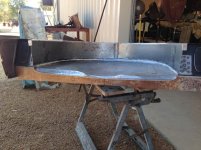
This allowed the test fitting of the rear apron to refine the rear edges of the carrier base and also the final shaping of the curve along the bottom of the box section that links the apron to the front wall of the box section. This was spot welded to the flange at the bottom of the apron.
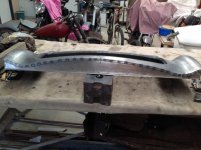
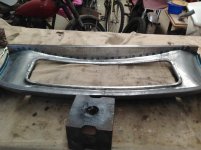
The rear apron is temporarily bolted to the brackets / side panels with bolts through the rear mudguard mounting holes. It still has to be welded to the side panels and then seam welded around the edge of the wheel carrier and apron flange. Further, the flange on the base of the box section will be spot welded to the front wall of the box section.
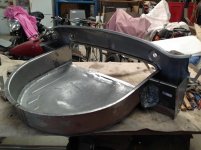
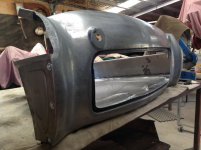
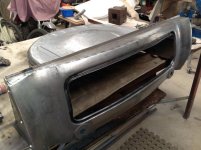

Felt pretty good walking the length of the shed with the rear section of the car on the top of my head to test fit it on the chassis. (Small things amuse small minds!)
Slow week. A friend asked me to cut out the rust in his Toyota Landcruiser so that has been taking priority. I hate patch ups!
Finished the spare wheel carrier and fitted the front of the box section and mounting brackets. All parts are spot welded to the carrier base.


This allowed the test fitting of the rear apron to refine the rear edges of the carrier base and also the final shaping of the curve along the bottom of the box section that links the apron to the front wall of the box section. This was spot welded to the flange at the bottom of the apron.


The rear apron is temporarily bolted to the brackets / side panels with bolts through the rear mudguard mounting holes. It still has to be welded to the side panels and then seam welded around the edge of the wheel carrier and apron flange. Further, the flange on the base of the box section will be spot welded to the front wall of the box section.




Felt pretty good walking the length of the shed with the rear section of the car on the top of my head to test fit it on the chassis. (Small things amuse small minds!)

 Hi Guest!
Hi Guest!

 smilie in place of the real @
smilie in place of the real @
 Pretty Please - add it to our Events forum(s) and add to the calendar! >>
Pretty Please - add it to our Events forum(s) and add to the calendar! >> 
